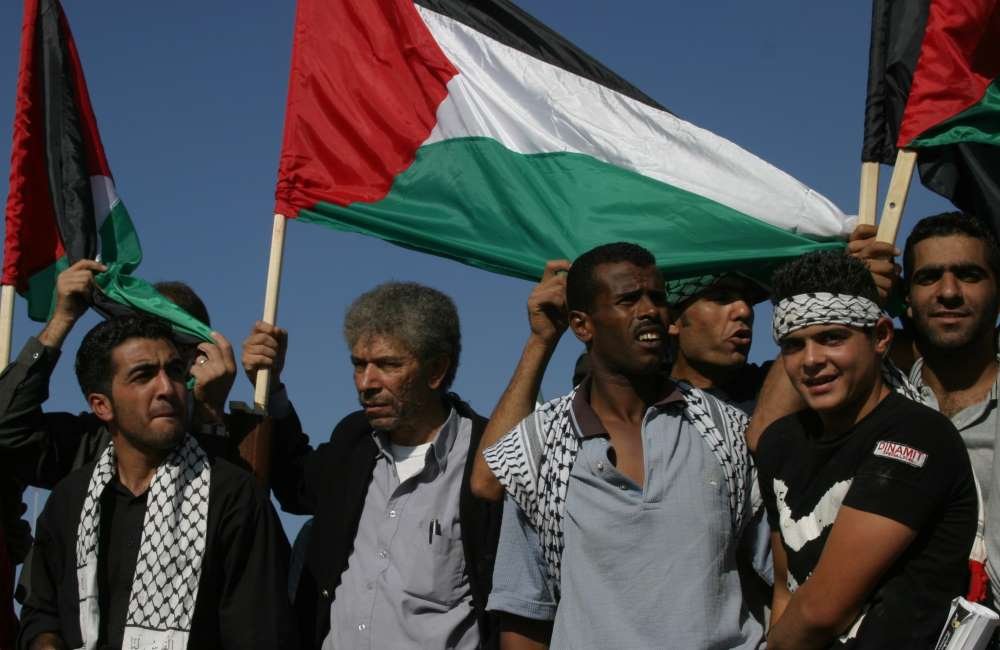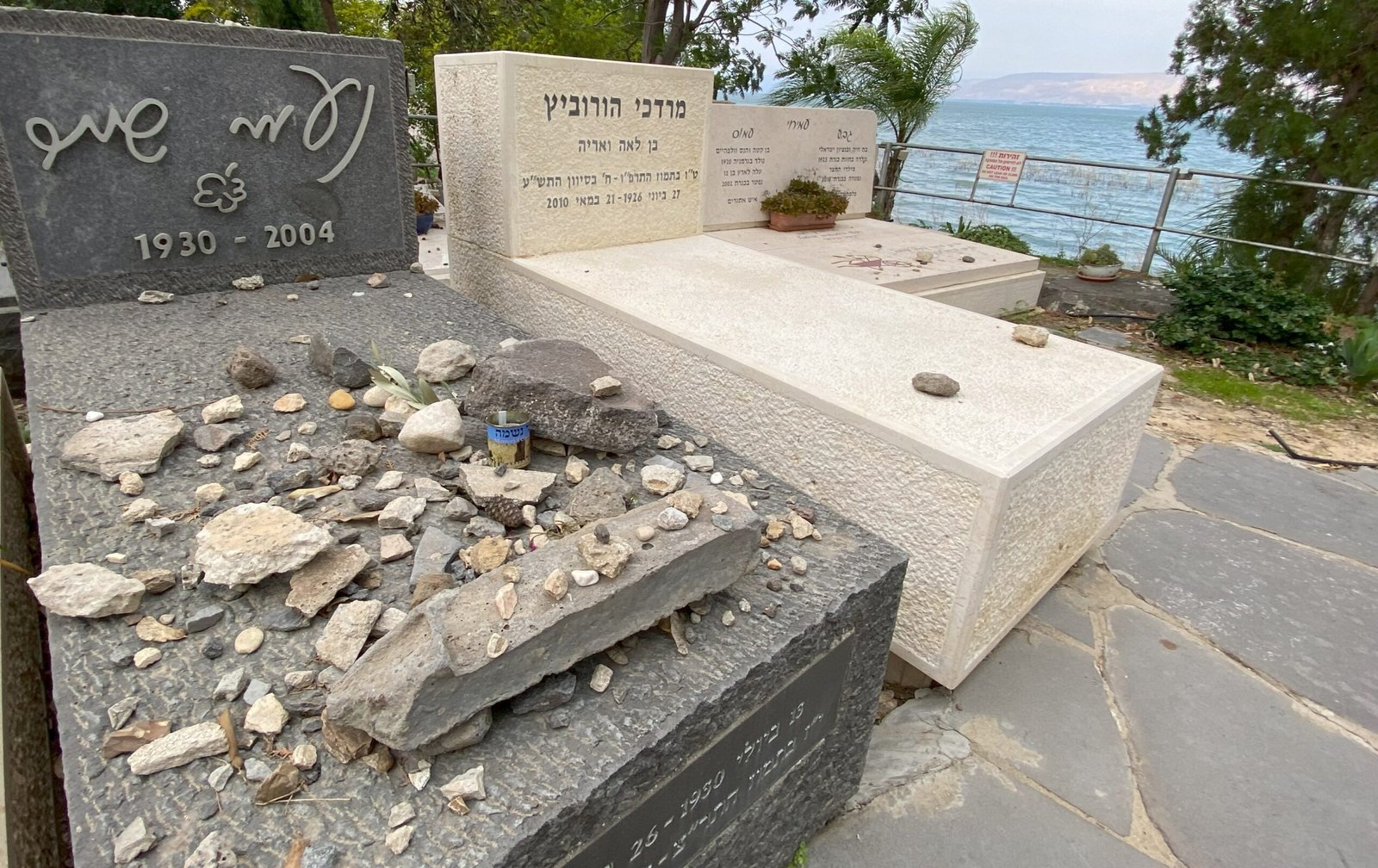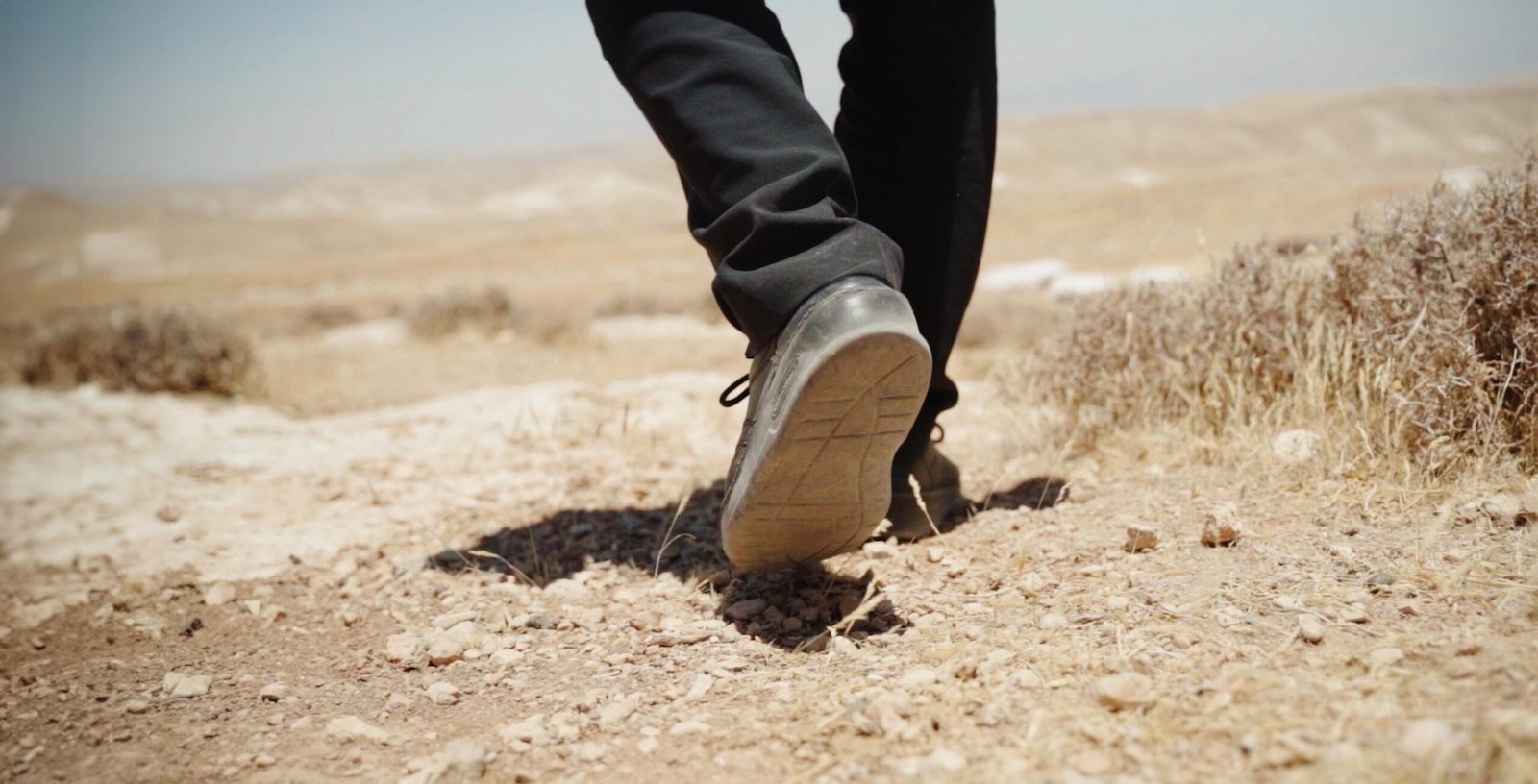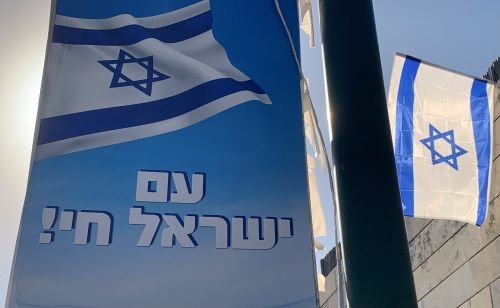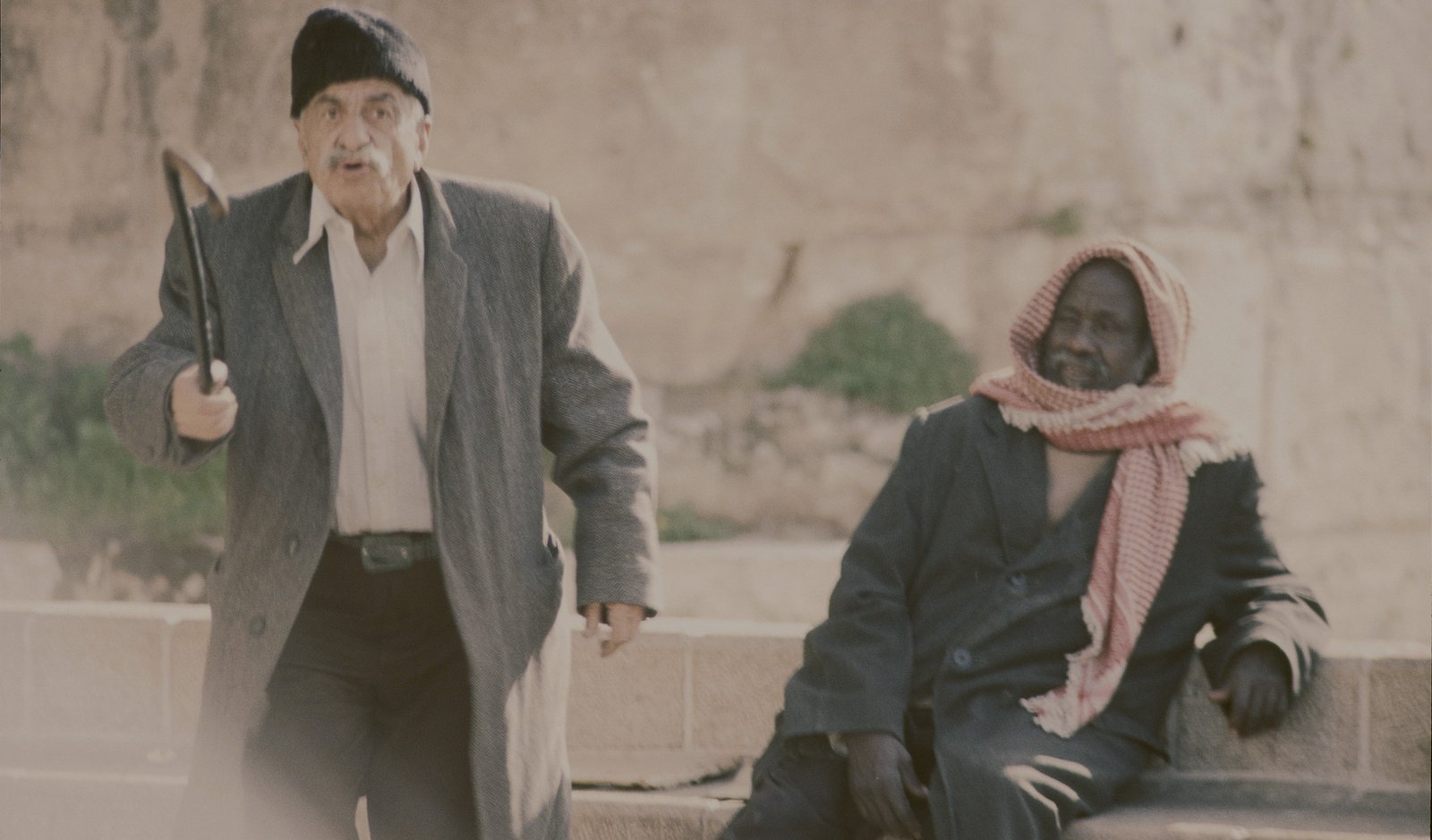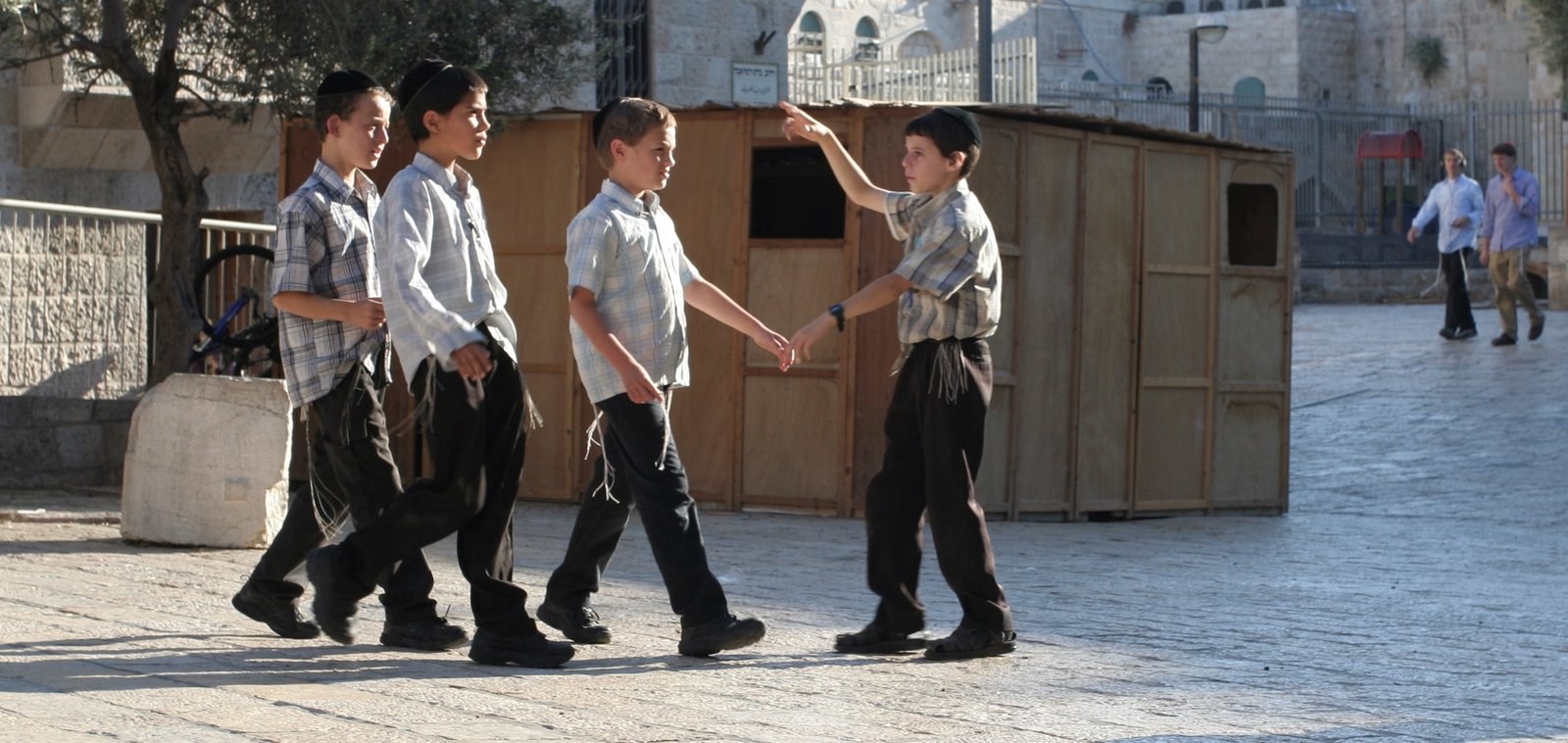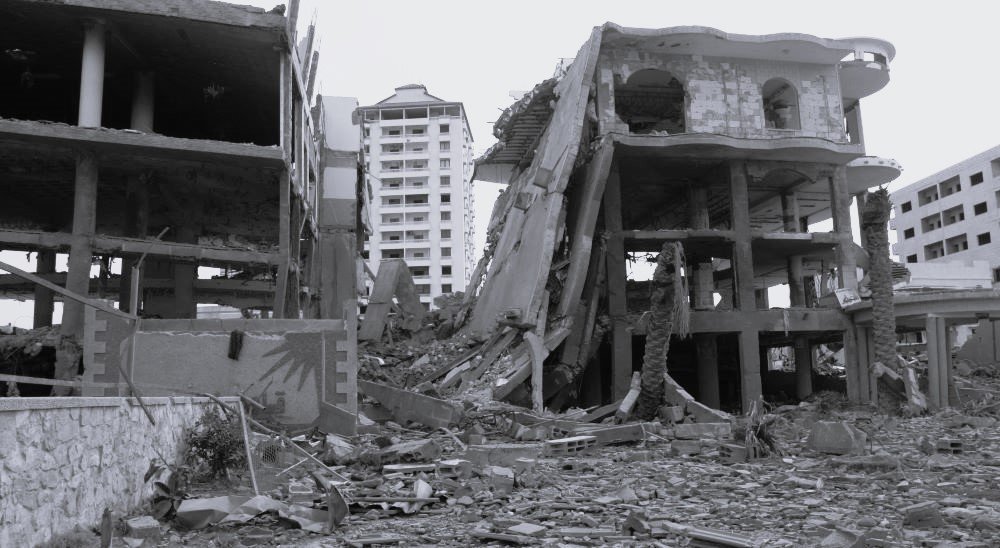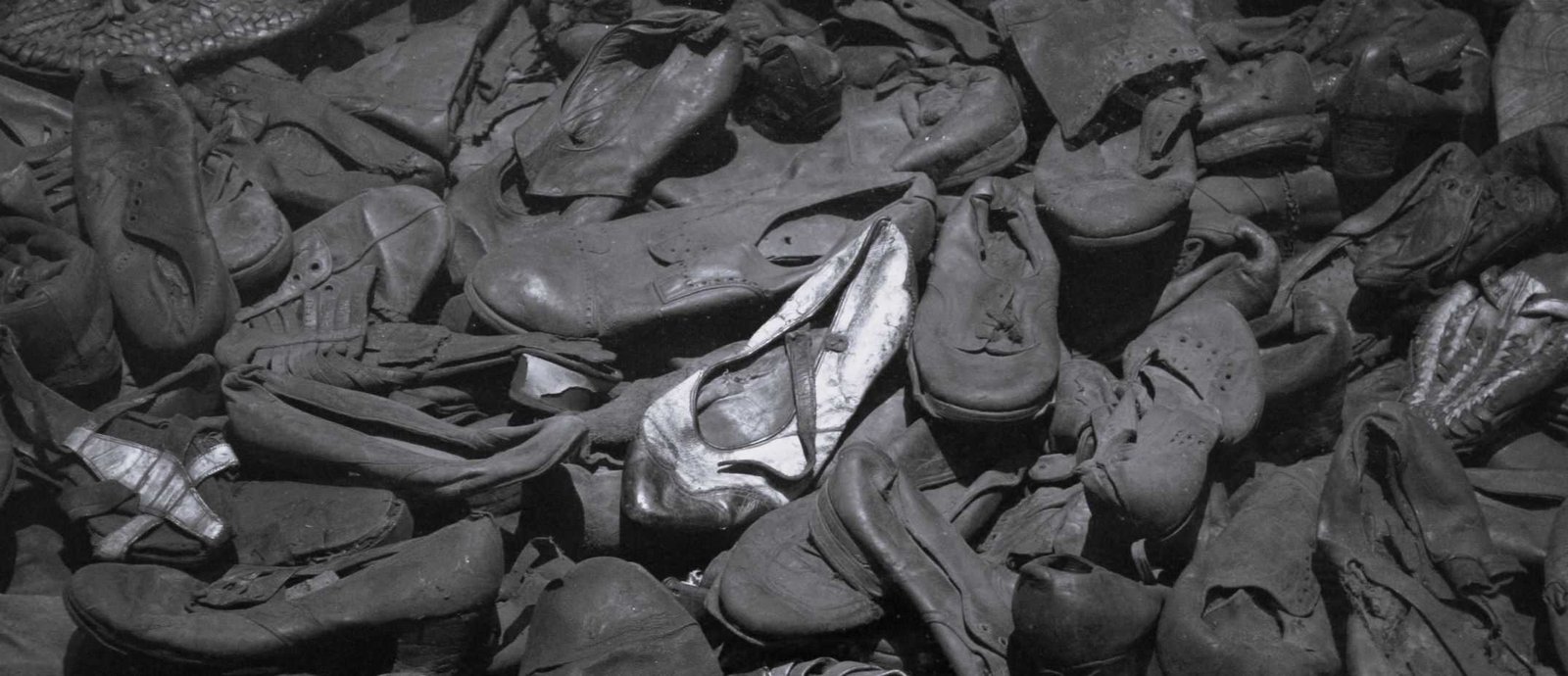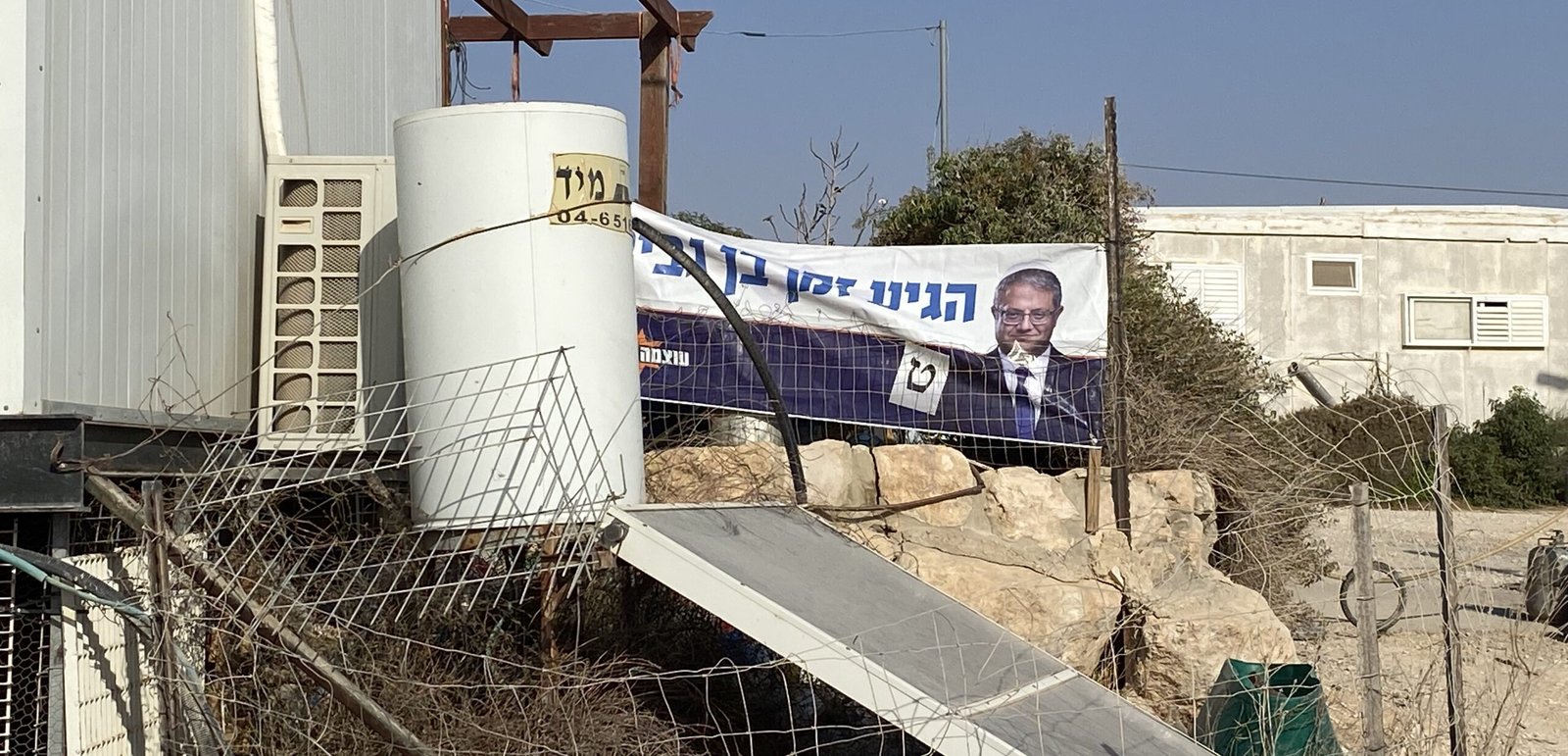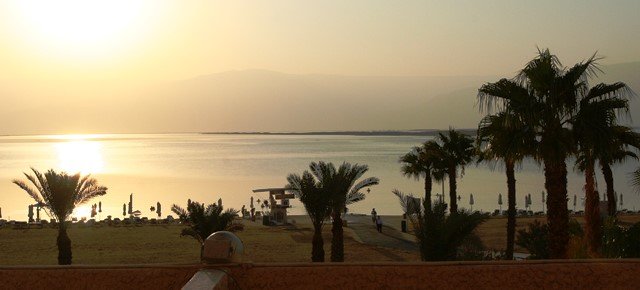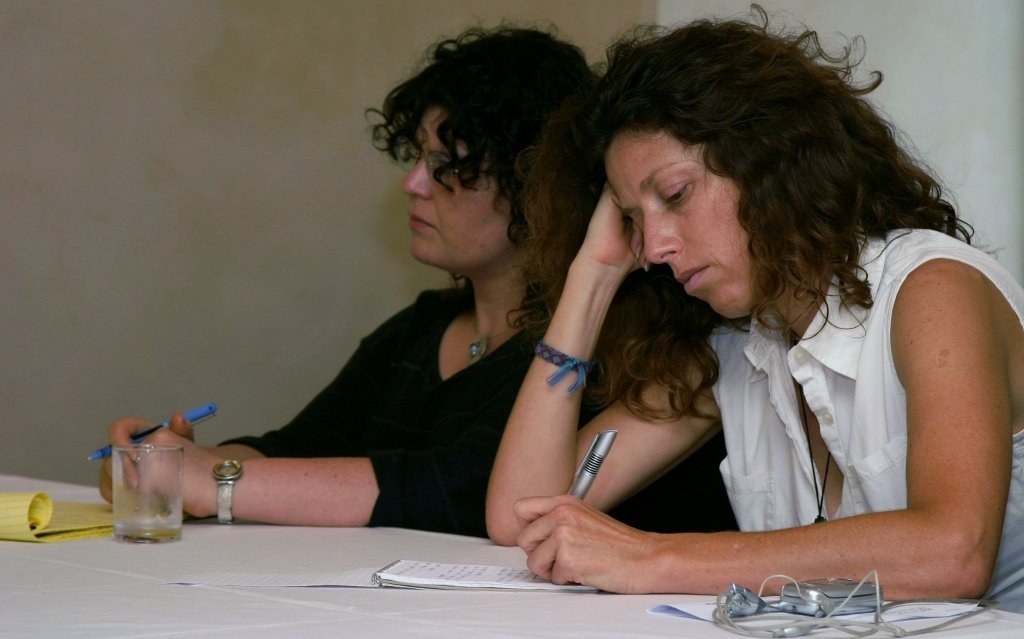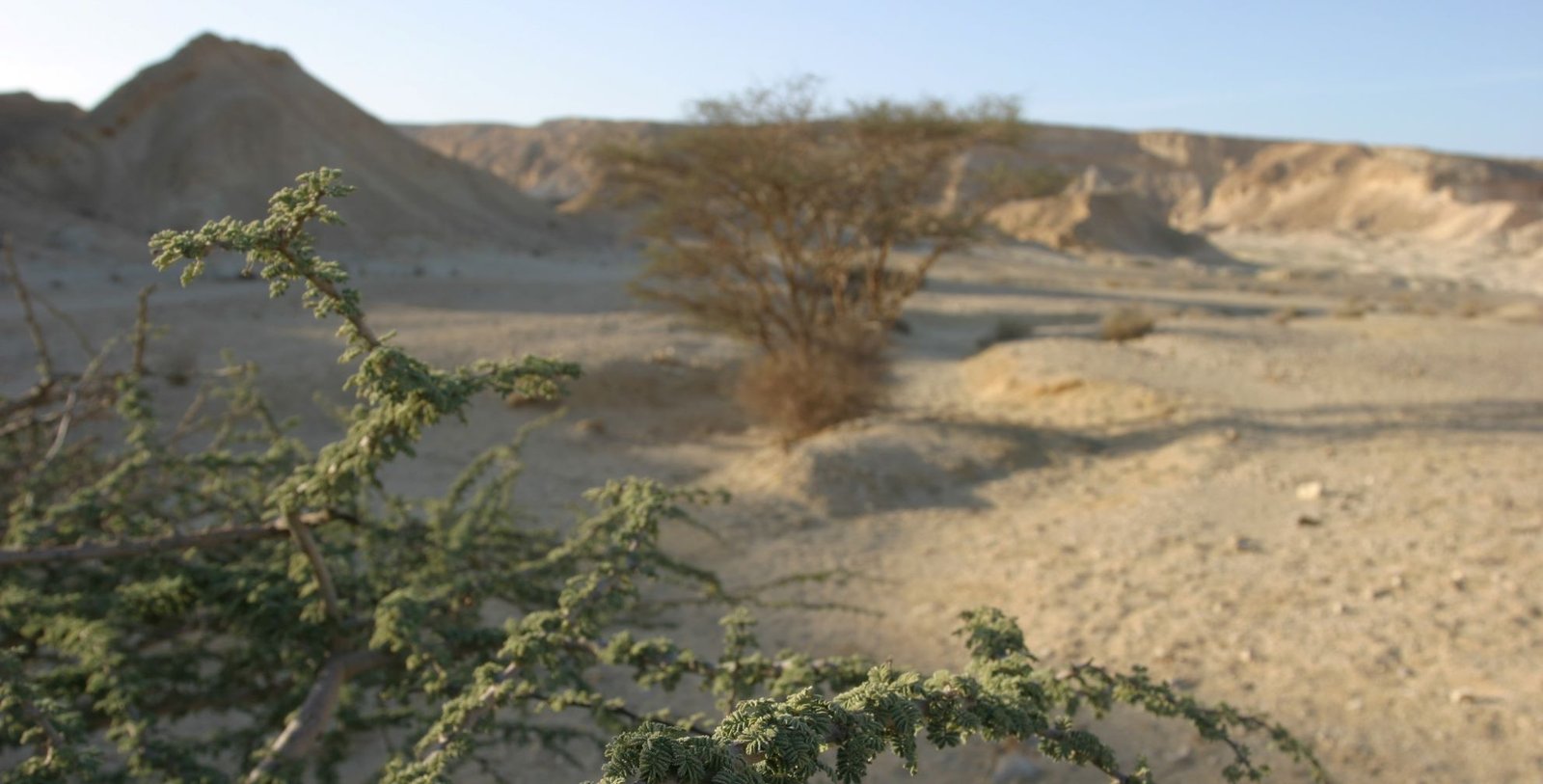Share This Story, Choose Your Platform!
A chronology communicates the impression of objectivity. However, I had to choose. What is part of “Palestinian” history, what not?
Do I need to list all the Arab terrorist attacks against Israel? How do I indicate a disastrous wave of suicide bombings that is relevant for subsequent developments of Palestinian society? Perhaps, I even should list all terrorist attacks worldwide, inasfar as they have “Palestinian” roots – regardless of whether their motivation was ideological-religious, political, or perhaps even economic? After all, Palestinian terror is a major factor in the fact that the fate of the Palestinians is viewed by world public opinion quite differently from the fates of other comparable ethnic groups.
Should Palestinian history include all of Israel’s military actions intended to curtail terror, from the sealing off of Palestinian territories to the targeted killings? After all, they have had a decisive impact on the national psyche of these people. And: Should it be part of a “chronology of the Palestinian people” when Palestinian militias fight in Jordan or Lebanon?
Does this include intra-Palestinian feuds, competition and rivalries? According to Wikipedia[1]: “The Arab Palestinian society and its politics cannot be understood without the rivalry between two major clans, the al-Nashashibis and the al-Husaynis.”
But should a chronology of the Palestinian people focus primarily on military actions and terror at all? After all, Palestinians were and still are prominent throughout the Middle East as craftsmen and civil engineers.
When does “the Palestinian history” begin?
Does it need to be mentioned in a “Chronology of Palestine” that in the second half of the 4th century CE, 60 to 70 percent of the population of the Land of Israel aka Palestine were still Jews?
Or is it relevant, that in 716, Suleiman, son of Caliph al-Walid, built Ramle 28 miles west of Jerusalem to become the administrative capital of “Falastin” (southern Palestine) for several centuries – whereas Jerusalem never was considered a capital of even a province in the area, except during the Crusaders’ period and when Jews or Israelites had their kingdoms?
From 1516 to 1917, the land between the Mediterranean and the Jordan River was part of the Ottoman Empire.
In spring 1799, Napoleon advanced northwards from Egypt. The Holy Land became the focus of international interest. Before the French military campaign came to a halt at Acre, the future French emperor had proclaimed that Palestine, including Jerusalem, should be returned to its rightful heirs, the Jewish people.
It is remarkable that the Qatari news channel “Al Jazzeera” starts its “Timeline of Palestine’s History”[2] with exactly this event. The subsequent timeline, actually, is all about “Zionism”. This fact seems to suggest that Palestinian identity indeed cannot be understood without the political realization of the milleania-old aspiration of the Jewish people to return to the land of their forefathers.
In 1831, Mohammed Ali, Pasha of Egypt, rebeled against the Ottoman Sultan. His son Ibrahim captures Palestine and governs it for nine years, with a liberal approach towards Christians and Jews. During this time, the Christians of Bethlehem expel all Muslims, who had occupied a separate quarter in the town up until that time.
After an insurrection in 1834 of the Arabs in Palestine against Muhammad Ali’s demand for conscripts this quarter was destroyed by order of Ibrahim Pasha. Conscription for peasants was nothing less than a death sentence. Since that period, Bethlehem has been almost exclusively occupied by Christians. In Hebron a pogrom of Muslims against their Jewish neighbors takes place.
Some historians consider this as the first formative event of the Palestinian people. The article “History of the Palestinians” from Wikipedia, the free encyclopedia[3] refers to either “the revolt in 1834 of the Arabs in Palestine as the first formative event of the Palestinian people” or the possibility that “Palestinian Arab nationalism as a distinct movement appeared between April and July 1920”. In its second sentence, however, it states: “Since 1964, they have been referred to as Palestinians (Arabic: الفلسطينيين, al-filastiniyyin),” without giving a specific source for this claim.
According to Wikipedia, the “History of the Palestinians” ends(!) with the “1948 Palestinian Exodus (1948-1949)”, which “is referred to by most Palestinians and Arabs as the Nakba (Arabic: النكبة), meaning ‘disaster’, ‘catastrophe’, or ‘cataclysm’.”[4]
Wikipedia’s article “Palestinians”[5] claims that they “are an ethnonational group”, providing sources from 2013 (Riad Nasser), 2011 (Oded Haklai), 2009 (Hisham Motkal and Maram Hussien Abu Rayya), 2006 (Mir Zohair Hussain and Stephan Shumock), 2005 (Tamara Cofman Wittes), and 2002 (Hassan Jabareen).
1880-1884: The Ottoman government settled Muslim Circassians in the Golan to push back predatory Bedouins. Other settlers came from Sudan, Algeria, Kurdistan, Turkey, Bosnia, and Samaria.
1908: Palestinian writer Najib Nassar published the Al-Karmel newspaper opposing Zionist colonization.
1911: Palestinian Christians founded in Jaffa the Arabic-language newspaper Falastin (Palestine).
March 1916: In secret, the Sykes-Picot agreement divided the Ottoman Empire into French and British spheres of influence. Palestine was to be placed under international administration. In today’s Syria, an Arab state under French protectorate was envisaged; in the area east of the Jordan River and in the Negev, an Arab state under English protectorate was to be established.
March 28, 1917: The Ottomans expel all Jews from Haifa and Tel Aviv.
November 2, 1917: The British “Balfour-Declaration” promises a “Jewish National Home” in Palestine.
1920-1947: British Mandate
Between April and July 1920: Palestinian Arab nationalism as a distinct movement appeared, after the “Nebi Musa riots” (04.-07.04.1920), the San Remo conference (19.-26.04.1920) and the failure of Faisal ibn Husayn to establish the Kingdom of Greater Syria. (The movie “Lawrence of Arabia” describes this episode in the history of the Middle East.)
May 1921: Violent riots against Jewish colonization in Jaffa, Tel Aviv, Kfar Saba and Rechovot cost the lives of 48 Jews and 47 Arabs; more than 200 were injured.
British High Commissioner Sir Herbert Samuel attempted to appease the insurgents by restricting Jewish immigration (“Churchill White Paper”), pardoning prisoners, and by appointing Haj Amin el-Husayni Grand Mufti of Jerusalem in 1922, who subsequently became the leader of the Arab insurgent movement.
1926: Arthur Ruppin founded the “Brit Shalom” for an understanding of Zionism with the Arab population based on equality and mutual recognition. He advocated a binational state in Palestine.
1928: Izz ad-Din al-Qassam founded the “Young Muslim Men,” a precursor to Hamas, who engaged in Boy Scout-style military exercises and attacked Jewish settlements. In the same year, the Egyptian elementary school teacher Hassan al-Banna founded the “Society of the Muslim Brotherhood”.
August 04, 1929: Yasser Arafat is born in Cairo. After the death of his mother in 1933, he was sent to live with an uncle in Jerusalem.
August 23, 1929: After months of continued harassment at the Western Wall in Jerusalem the “Al-Buraq Uprising” reached a climax in country-wide mass protests against Jewish immigration and massacres of the Hebron and Safed Jewish communities. 133 Jews, 116 Arabs and seven British policemen were killed. Commissioned by the British government, the “Shaw Commission” investigates the cause of the unrest.
1930: A British inquiry commission declares Muslim ownership of the Western Wall but confirms Jewish right to worship. The ban on blowing the Shofar (ram’s horn) and other restrictions were not lifted. Haj Amin el-Husayni proclaimed holy war against the infidels, adopting the crudest anti-Semitic excesses in his militant call.
1931: “The Palestine Post” (later renamed “The Jerusalem Post”) first published. Palestine is home to about 760,000 Muslim Arabs, 175,000 Jews, 90,000 Christians, 160 to 190 Samaritans, and about 7,000 Druze in the Hauran Mountains. Jerusalem has 90,503 inhabitants, of whom 51,222 are Jews.
1933: Jews from Germany begin to immigrate to Palestine. The Arabs react with mass protests and fierce active resistance, which in 1936 degenerated into an insurrectionary movement that lasted until 1939.
March 5, 1935: Jerusalem’s Mufti Amin el-Husayni and Mayor Ragheb Bey Nashashbi are supported by German Nazi propagandists to stir up hatred against Jews among the population. Jewish property is marked with swastikas and Jewish women are incarcerated for months in Bethlehem prison. “Illegal immigration” is cited as the charge.
November 1935: Shaykh Izz ad-Din al-Qassam, a revolutionary leader in Palestine, is killed near Jenin by British police.
1936: The “Palestine Broadcasting Service” (later renamed “Kol Israel”) begins operating.
1936-1939: “The Great Arab Revolt” against British rule and Jewish immigration cost the lives of 2,850 Arabs, 1,200 Jews and 700 British. Many moderate Arabs are killed by Arab extremists.
July 1936: The Establishment of the Arab Higher Committee under the leadership of Haj Amin el-Husayni left moderate Arab leaders without any chance.
August 1936: A Royal Commission under Earl Peel investigates the situation. It recommends to partition of Palestine. This proposal is rejected by the Arabs, approved as basis for further negotiations by the Zionist Congress.
1938: Another British plan calls for one state with an Arab majority; the Arabs indicate acceptance, but the Jews oppose it.
May 17, 1939: The British government bows to the Arab rebellion and, with its last “White Paper,” limits the number of Jewish immigrants to Palestine to 15,000 per year. After five years, there was to be a total immigration stop for Jews.
November 28, 1941: Haj Amin el-Husayni, the Grand Mufti of Jerusalem, arrives in Berlin as a guest of Adolf Hitler. For years, the two had grown closer. Husayni had used the world’s fear of Hitler to push pan-Arab interests in British Mandate Palestine against the Jews. Now the Mufti asks the Führer as “protector of Islam” to exterminate all Jews.
January 20, 1942: In a villa in Berlin-Wannsee, members of the NSDAP and the SS, led by Reinhard Heydrich, decide a “Final Solution of the Jewish Question,” i.e., the systematic murder of eleven million European Jews.
1945: Said Ramadan founds a socio-religious offshoot of the Egyptian Muslim Brotherhood in Jerusalem, which becomes the forerunner of the Hamas movement, but does not actively participate in the struggle against Jewish settlement in Palestine.
March 22, 1945: The Arab League is founded in Cairo by Egypt, Iraq, Syria, Lebanon, Transjordan, Saudi Arabia and Yemen as a union against Israel – sponsored by Great Britain.
1946: Transjordan becomes independent and a monarchy. The French mandate becomes the Republic of Syria.
February 1947: The British government declares its Palestine mandate terminated and returns it to the United Nations.
May 15, 1947: The UN General Assembly establishes the United Nations Special Committee on Palestine (UNSCOP) to examine the situation in the country.
November 29, 1947: The United Nations General Assembly passes Resolution 181 with 33 votes in favor, 13 against, and ten abstentions. The Palestinians reject it.
The very next day, the Grand Mufti’s irregulars murder five Jews in an attack on a bus near Lod. Near Jerusalem’s Old City, Arabs attack Jewish stores.
David Ben Gurion assures his Arab neighbors on the same day: “We have no aggressive intentions against anyone. If we are attacked, we will accept the challenge; but we sincerely hope that this will not be necessary. The Middle East needs peace more than anything, and we need peace more than anything…”
Spokesmen for the Arab-Islamic states represented in the United Nations stress “that the UN decision undermines justice and peace and does not bind their states.”
Earlier, a Palestinian representative had announced: “It is the firm and unequivocal will of the Arabs not to contemplate any solution that would mean the loss of their sovereignty over any part of their country.”
Immediately after the UN partition plan, the Arabs went over to armed resistance tolerated by the British. Bombings and fire attacks on Jewish settlements and residential neighborhoods occured throughout the country. From Syria and Transjordan, freedom fighters and armed squads are entering Palestine.
By December 31, 1947, at least 205 Jews have fallen victim to the Grand Mufti’s wave of terror. In the six months between the UN partition resolution and the end of the British mandate, fighting between Arab guerrilla forces and Jewish fighting units increasingly escalates into civil war.
1948: Arafat begins his engineering studies in Cairo and joins the Muslim Brotherhood.
March 26, 1948: The Grand Mufti’s irregulars block the road corridor between Tel Aviv and Jerusalem.
April 9, 1948: A battle takes place near Jerusalem that later becomes known as the “Deir Yassin Massacre.”
April 15, 1948: The Haganah reopens the Jerusalem corridor to Jewish convoys.
1948-present: State of Israel
May 14, 1948: Ben-Gurion, chairman of the “Jewish Agency for Palestine,” declares the establishment of a Jewish state in the Land of Israel. This is the official trigger of the Israeli War of Independence. Israel is attacked by Egypt, Syria, Transjordan, Lebanon and Iraq. 650,000 Jews face 40 million Arabs.
May 28, 1948: The Jewish quarter in the Old City of Jerusalem surrenders. 58 synagogues are destroyed, and the Jewish population is expelled. The Armistice Agreement in 1949 stipulated free access for all religions to their holy sites. However, until 1967, Jews could neither visit the Western Wall nor the cemetery on the Mount of Olives, nor could Israeli Arabs visit churches or mosques in the eastern part of the city.
Palestinians refer to the 1948/49 Israeli War of Independence as the “Naqba” (“catastrophe”). 150,000 Arabs remained in Israel, living under military rule until 1966, but were eventually granted Israeli citizenship. About 700,000 to 800,000 Arabs from mandatory Palestine became refugees. Between 1948 and 1952, a comparable number of Jews came to Israel from the Middle East and North Africa. Thus, a population exchange took place between Israel and the Arab world during these years, as happened at the same time in a similar way in Central Europe, the Balkans or the Indian subcontinent.[6]
In September 1948, Egypt formed the All-Palestine Government in Gaza and appointed former Grand Mufti of Jerusalem, Haj Mohammad Amin al-Husayni, as its president.
October 10, 1948: The All-Palestine government declared an independent Palestinian state in all of Palestine region with Jerusalem as its capital. This government was recognised by Egypt, Syria, Lebanon, Iraq, Saudi Arabia, and Yemen, but not by Jordan or any non-Arab country.
December 1, 1948: The Second Arab-Palestinian Congress in Jericho proclaimed Abdullah King of Palestine and called for a union of Arab Palestine with the Hashemite Kingdom of Transjordan. During this month the All-Palestine Government relocated from Gaza to Cairo.
Between February and July 1949 armistice agreements were signed between Israel and Lebanon, Syria, Jordan and Egypt. To facilitate these agreements, Israel withdrew from significant territory on the Sinai Peninsula and in Lebanon. Only Iraq rejected any international agreement with Israel.
The border lines agreed upon in these agreements were called “demarcation lines” at the express request of the Arab negotiators. Egypt refused to annex the Gaza Strip. Gazans needed passports to go to Egypt. In March 1949, Jordan forbade the use of the term “Palestine” by royal decree and outlawed all All-Palestine Government activity.
December 8, 1949: Establishment of the United Nations Relief and Works Agency for Palestine Refugees in the Near East (UNRWA).
April 24, 1950: King Abdullah I of Jordan annexed the West Bank, including East Jerusalem. Only Britain and Pakistan recognized this annexation.
1951: King Abdullah, who had secretly agreed to co-existence with Israel, was denounced a traitor to the Arab cause and assassinated by a Palestinian at the Al-Aqsa mosque compound in Jerusalem.
1951-57: Arafat studies engineering at Cairo University and becomes involved in the Palestinian cause.
1956: In the course of the Suez Crisis, Israel conquered the entire Sinai Peninsula and thus also the Gaza Strip, but withdraws from there again by March 1957 due to international pressure.
October 29, 1956: In the so-called “Kafr Qasm Massacre,” eleven Israeli border guards shoot villagers returning from the field after a curfew had been imposed. There were 49 dead, including nine women and seven children. Eight border guards were convicted of murder.
June 2, 1964: Establishment of the “Palestine Liberation Organization” (PLO) in Jerusalem[7]/Cairo[8] at the instigation of Egyptian President Gamal Abdel Nasser, with Ahmed Schukeiri becoming its first Secretary General. The Palestinian National Covenant stated as goal the creation of a Palestinian state in the whole of the former British Mandate, thus nullifying not only Israel’s right to exist but that of the Hashemite Kingdom of Jordan as well.[9]
1967-present: Israeli Occupation of the West Bank
June 5-10, 1967: During the Six-Day War Israel occupied the West Bank, including East Jerusalem, the Gaza Strip and the Sinai Peninsula, as well as the Golan Heights.
September 1, 1967: At the “Conference of Karthoum”, the leaders of the Arab League agree on the “Three Cathegorical No’s”, to, first, a recognition of the State of Israel, second, negotiations and, third, a peace with Israel.
December 1967: George Habash established the marxist-leninist “Popular Front for the Liberation of Palestine” (PFLP).
March 1968: After an Israeli school bus was blown up by a mine near Beer Ora in the Arava, killing two adults and wounding ten children, IDF units enter Jordan and attack the Karameh camp. The battle lasts one day. 200 PLO Fedayeen, 40-84 Jordanian soldiers and 30 IDF soldiers are killed.
July 23, 1968: By hijacking an El Al plane, the PLO extorts the release of 16 terrorists from Israeli prisons.
December 24, 1968: The PLO writes armed struggle into its National Charter as the only way to liberate Palestine.
February 4, 1969: Arafat elected chairman of the PLO.
August 21, 1969: The Australian Christian Dennis Michael Rohan sets fire to the al-Aqsa mosque, causing serious damage.
September 1970: “Black September” – After an attack on Jordan’s King Husayn and a spectacular hijacking of three airplanes to Jordan, Jordanian troops attack Arafat’s PLO militia. At least 10,000 Palestinians are killed in fierce fighting – Arafat later speaks of 25,000 dead. The PLO units, supported by Iranian rebels, Syria, the Soviet Union and Algeria, are driven into Lebanon, up until then the “Switzerland of the Middle East”.
November 28, 1971: The Black September Organization assassinates Jordanian Prime Minister Wasfi Tell.
May 8, 1972: IDF forces storm a hijacked Belgian Sabena airliner at Ben Gurion Airport. One passenger, five IDF soldiers and all four terrorists are killed.
May 30, 1972: 26 dead, including 20 Puerto Ricans, and 78 injured in an attack at Ben Gurion Airport.
September 5, 1972: Attack on the Summer Olympics in Munich.
1973: Sheikh Ahmed Yassin establishes an Islamic center in Gaza.
June 8, 1974: The Palestinian National Council (PNC) accepts at its 12th meeting in Cairo the Ten Point Program of the PLO, calling for the establishment of an Israeli-Palestinian democratic, binational state, as one step towards “completing the liberation of all Palestinian territory, and as a step along the road to comprehensive Arab unity.” Hardline groups break away from the mainstream PLO, forming the Rejectionist Front.
October 1974: The Arab League declares the PLO in Rabat/Morocco the “sole legitimate representative of the Palestinian people”.
November 13, 1974: Arafat speaks armed to UN General Assembly, which overwhelmingly affirms Palestinians’ right to “national independence and self-determination.”
April 1975: Lebanese civil war breaks out between Christians and Muslims, whereby surviving fedayeen of the “Black September” play a crucial role.
December 1, 1975: The UN recognizes the PLO as sole representative of the Palestinian people. It is granted observer status in UNESCO.
December 21, 1975: In Vienna, the German Red Army Fraction (RAF) attacks the OPEC headquarters on behalf of the PLO.
January 20, 1976: In Damour, Lebanon, the PLO commits a massacre of Christians.
June/July 1976: An El Al plane is hijacked to Entebbe/Uganda. The PLO hostages are freed by an IDF commando.
January 11, 1977: France releases Abu Daoud, allegedly involved in the 1972 massacre of Israeli athletes at the Munich Olympics.
March 8, 1977: “Reconciliation” between Arafat and King Husayn.
October 1977: The PLO hijacks a Lufthansa plane to Mogadishu/Somalia, where the 86 hostages are freed by Germany’s anti-terror unit “GSG 9”.
November 19, 1977: Egyptian President Anwar Sadat accepts Israeli Prime Minister Menachem Begin’s invitation to Jerusalem, paving the way for the Camp David peace accords.
December 28, 1977: The Knesset ratified the peace program, which the government formulated for the negotiations with Egypt, including the idea of a Palestinian autonomy.
February 18, 1978: Three months after Anwar Sadat’s visit to Jerusalem, his old friend Yusuf al-Sibai is shot dead by two Abu Nidal gunmen while attending a conference in Nicosia/Cyprus. The killers seize hostages and try to hijack a plane at Larnaca airport. Fifteen Egyptian commandos, sent to help end the siege, are gunned down at the airport by Cypriot national guardsmen because of botched communications.
March 11, 1978: Thirteen Palestinian terrorists land by boat on a beach near Tel Aviv and seize a bus. Engaging police in gun battle during which bus explodes, 43 people are killed and 72 injured.
March 14-21, 1978: “Operation Litani” intended to strike back at the Fatah terrorists in their bases ten kilometers inside Lebanon. 300 terrorists and 35 IDF soldiers were killed.
September 1978: American, Egyptian and Israeli politicians negotiate a two-part treaty at Camp David. The first part provides for an Israeli-Egyptian peace treaty, the return of the Sinai Peninsula to Egypt and a normalization of relations between the two countries. The second part calls for talks between Egypt, Israel, Jordan, and the Palestinians; a Palestinian autonomy in the West Bank and Gaza; a five-year transition period before a final status treaty; and a Jordanian-Israeli peace treaty.
January 22, 1979: Eli Hassan Salama, a senior Fatah commander and planner of the Munich massacre, is killed when two car bombs explode in central Beirut/Lebanon.
March 14, 1979: One year after falling captive into the hands of the Democratic Front for the Liberation of Palestine (DFLP) IDF reserve soldier Amram Avraham is returned to Israel in exchange for 76 terrorists.
March 26, 1979: Egyptian President Anwar el-Sadat and Israeli Prime Minister Menachem Begin sign the Camp David Peace Agreement at the White House in Washington. Syrian President Hafez el-Assad condemns the agreement. A bomb attack injures 19 people at a market in Lod, not far from Israel’s airport.
April 22, 1979: Four terrorists – one of them the Druse Samir Kuntar – penetrated a housing complex in Nahariya. Danny Hadan and his two daughters, Einat and Yael, are killed as was policeman Eli Shahar.
July 7, 1979: Arafat meets with Austrian Chancellor Bruno Kreisky and Socialist International President Willy Brandt in Vienna.
November 13, 1979: The Israeli ambassador to Portugal, Ephraim Eldar, his chauffeur, and a local policeman are injured in an assassination attempt in Lisbon. A security guard at the embassy is killed.
June 13, 1980: The European Community recognizes a right of self-determination for the Palestinians and calls for PLO participation in peace negotiations.
June 2, 1982: In the center of London Israel’s ambassador in Britain, Shlomo Argov, is shot in the head by gunmen of Abu Nidal, critically wounded and consequently paralyzed.
Juni 4/5, 1982: With “Operation Peace for Galilee,” the IDF enters Lebanon to push back the Palestinians – after months of bombarding Israeli villages and towns.
June 18, 1982: Kamel Husayn, head of the PLO’s Rome office and a close associate of Arafat, is killed when his booby-trapped car explodes in the Italian capital. Abu Nidal is responsible.
August 11, 1982: Due to U.S. mediation, Arafat and 10,000 PLO fighters are allowed to leave the Lebanese capital by ship for Tunis/Algeria.
September 1, 1982: US-President Ronald Reagan called for full Palestinian autonomy in political union with Jordan.
September 14, 1982: Lebanon’s Christian president, Bashir Gemayel, is assassinated.
September 15, 1982: Arafat is received by Pope John Paul II, as well as Italy’s President Sandro Pertini and Foreign Minister Emilio Colombo.
September 16-18, 1982: The IDF enters Beirut. Christian militias murder hundreds of Palestinians in the Sabra and Shatila refugee camps.
September 23, 1982: Four terrorists of the Abu Nidal group try to kidnap Israel’s Charge D’Affaires in Malta, Esther Milo. She is lightly injured, but the attempt fails.
September 25, 1982: 400,000 Israelis demonstrate in Tel Aviv against the Lebanon campaign.
End of September 1982: The U.S. sends troops to Beirut and Israel withdraws.
March 13, 1983: PLO granted diplomatic status in Vienna.
June 1983: Syrian President Assad promotes radicals against Arafat, expelling him from Syria and attempting to gain control of the PLO.
November 23, 1983: Six Nahal soldiers who were taken captive by PLO forces one year earlier are released in exchange for 4,700 terrorists imprisoned in Lebanon and 65 imprisoned in Israel.
Late 1983: Suffering casualties, Israel begins to re-deploy south of Beirut. Arafat and 4,000 of his fighters return to northern Lebanon but leave for Arab countries after months of fighting.
October 28, 1984: IAF air strike on PLO headquarters in Tunis.
Februar 11, 1985: With the “Amman Agreement” King Husayn and Arafat declare to pursue a confederation of the PLO and Jordan and the principle “land for peace”.
September 6, 1986: Two Abu Nidal gunmen posing as photographers machine-gun the Neveh Shalom Synagogue in Istanbul during the morning Shabbat service, killing 22 Jewish worshipers and wounding six.
December 9, 1987: Beginning of the “first intifada”, triggered by a traffic accident in which four Arabs were killed. Heavy clashes between young Palestinians and the IDF in the Gaza Strip and the West Bank follow. In contrast to the “second Intifada,” at first it remains mainly stone throwing at IDF soldiers. In the course of time, Molotov cocktails and hand grenades are also used. By the end of 1989, Intifada activists had killed 163 Arab collaborators. Initially, well over 60 percent of the intifada attacks were directed against their own people. By 1993, 185 Israelis and 1,200 Palestinians had lost their lives as a result.
December 15, 1987: Sheikh Ahmed Yassin officially founds the “Harakat al-Muqawama al-islamiya,” the “Islamic Resistance Movement,” abbreviated to “Hamas” (حَمَاسْ) in Gaza.
July 29, 1988: King Husayn of Jordan transfers all legal and administrative ties to the West Bank to the PLO.
November 15, 1988: The Palestinian National Council (PNC) declared in Algiers a State of Palestine (Arabic: دولة فلسطين) with Jerusalem as its capital.
1989: Yitzhak Shamir offers Palestinians autonomy in his own peace initiative.
By February 1989 eighty-nine states have recognized Palestine.
April 1989: The PLO forms a provisional government. Arafat is elected president of the state of Palestine.
April 27, 1989: Jerusalem church leaders protest Israel’s actions in the Intifada.
May 1989: Arafat declares the PLO’s founding charter of 1964 null and void.
May/June 1989: The 700 participants of the Conference on World Mission and Evangelism in San Antonio acknowledge the intifada as an expression of creative power. One draft resolution even sees the Holy Spirit at work in the Palestinian uprising. Ultimately, however, then the Conference on World Mission and Evangelism calls upon all churches to fully support the intifada against Israel.
April 6, 1990: Pope John Paul II receives Arafat.
May 30, 1990: The United Nations decides to send troops to protect the Palestinians in the occupied territories.
June 1990: The USA suspends talks with the PLO.
August 2-3, 1990: Iraq invades and annexes Kuwait. The U.S. and its NATO allies are forming a coalition with Saudi Arabia, Egypt, and other Muslim nations to liberate Kuwait. Syria’s President Hafes el-Assad deploys 29,000 troops in support of the U.S.-led Gulf War coalition. Jordan and the PLO support Iraq.
August 23, 1990: The National People’s Army (NVA) of the German Democratic Republic (GDR) suspends the training of PLO terrorists.
September 26, 1990: Intifada leaders call for solidarity with Saddam Husayn.
October 8, 1990: Thousands of Palestinians storm a police station on the Temple Mount during the Feast of Tabernacles and throw stones at numerous Jews praying at the Western Wall. In self-defense, the police guards shoot 22 Palestinians. The following day, anti-Semitic actions and rallies occur around the world.
October 13, 1990: The UN decides to send a commission to investigate the Temple Mount incidents.
October 30-November 1, 1991: The Madrid Conference – After the Gulf War ended in February 1991, the Americans under President George Bush senior pushed for an agreement between Israel and its adversaries. Eight visits by US Secretary of State James Baker to the region were needed to bring Israel and all its Arab adversaries – including, indirectly, the Palestinians – to the table for the first time in history.
December 17, 1992: Israel deports 415 Hamas and Islamic Jihad militants, who have been proven to have 321 lives on their consciences, to Lebanon. During this time, they learn from the Shiite Hezbollah how to carry out suicide attacks.
In the previous five years of “intifada”, 829 Palestinians were killed by the IDF. During the same period, 884 Palestinians were murdered by their own people, 132 Israeli civilians and 18 IDF soldiers fell victim to terrorist attacks.
January 19, 1993: By 39 votes to 20, Israel’s parliament decides that contacts and talks with the PLO are no longer punishable.
February 7, 1993: Hamas and Islamic Jihad call on PLO to withdraw from peace talks.
May 17, 1993: In Vienna Arafat meets Israeli journalists for the first time.
In the second half of August 1993, Shimon Peres and Ahmed Qrea alias Abu Ala reach an agreement in Oslo/Norway after the existence of direct talks had been denied several times during the previous nine months.
September 13, 1993: On the green lawn in front of the White House in Washington DC, the PLO and Israel sign a “Declaration of Principles on Interim Self-Government Arrangements” (Oslo I). This marks an official end to the first intifada, mutual recognition of Israel and the PLO, an IDF withdrawal from Gaza and Jericho and the establishment of a Palestinian Authority (PA).
November 24, 1993: In student elections, Fatah loses control of Bir Zeit University near Ramallah to the joint list of Hamas, DFLP and PFLP.
Febuary 25, 1994: On the Jewish festival of Purim, the physician Baruch Goldstein from Kiryat Arba shoots 29 Muslim worshipers in the Machpela cave in Hebron, 125 are wounded.
Februar 28, 1994: Israel’s Knesset condemns the Hebron massacre by 93 votes to 1.
May 4, 1994: The so-called “Gaza-Jericho-First”-agreement is signed in Cairo.
May 10, 1994: The first of 7,000 retrained Palestine Liberation Army troops enter as uniformed Palestinian police the Gaza Strip from Egypt and the West Bank across the Allenby Bridge from Jordan.
On the very same day, Arafat calls in an English speech in a Johannesburg mosque after attending the inauguration of South African President Nelson Mandela for “a jihad to liberate Jerusalem”, comparing himself to the prophet Mohammed and the agreements with Israel with an “agreement which had been signed between our prophet Mohammed and [the tribes of] Quraish” – i.e. an agreement that allowed him to pray in Mecca, which he observed for two years, until in 629 he entered Mecca with a strong force that caused the town to capitulate and nearly all its inhabitants to accept Islam.[10]
May 11, 1994: The Knesset passes the “Gaza-Jericho-First” agreement.
May 13, 1994: Israel hands Jericho over to the PLO.
May 18, 1994: The IDF completes its withdrawal from the Gaza Strip.
July 1, 1994: After a 25-year absence Arafat returns to Gaza.
July 5, 1994: Arafat visits Jericho, reiterates claim to Jerusalem.
November 29, 1994: A Hamas spokesman tells the BBC that peace in the Middle East is only possible if the Balfour Declaration is revoked.
December 10, 1994: Arafat, Peres and Yitzhak Rabin jointly receive the Nobel Peace Prize in Oslo.
December 26, 1994: The Israeli government passes the “Orient House Law,” which bans PLO activities in Israel.
February 1, 1995: First U.S. State Department human rights report on the situation in the autonomous areas notes mistreatment of prisoners by the Palestinian police, including one death.
February 9, 1995: EU foreign ministers meet Palestinian leaders in the Orient House in defiance of Israeli law, reaffirming Europe’s position on the status of Jerusalem.
February 12, 1995: Human Rights Watch says the PA governs Gaza in an “arbitrary and repressive manner.”
February 15, 1995: In a poll 68% of Israelis favor closing the Orient House.
February 20, 1995: Israeli and Palestinian representatives put the number of PLO police at 16,000 – twice the number agreed to in the Cairo Agreement.
March 8, 1995: Peace Watch reports seven PA offices in Jerusalem; representatives of the municipality speak of 12 to 15.
March 14, 1995: British PM John Major supports PLO claim to East Jerusalem.
March 21, 1995: Impartial observer Peace Watch reports that $13 million were paid to PLO forces in Lebanese refugee camps to “discourage them from deserting” – the same amount donor states allocated for Gaza development.
June 19, 1995: Ireland’s Foreign Minister Dick Spring meets PLO representatives in the Orient House.
September 28, 1995: In Taba the interim agreement “Oslo II” is signed. The IDF withdraws from Nablus, Ramallah, Jericho, Jenin, Tulkarem, Qalqilya and Bethlehem.
December 1995: The PLO assumed responsibility for civil administration in 17 districts in Hebron.
January 20, 1996: Arafat is elected president of the PA.
Since the 1996 Summer Olympics, the International Olympic Committee recognizes a Palestine Olympic Committee and Palestinian team.
November 19, 1996: A two-day sponsorship conference for the PA opens in Paris. Former U.S. Secretary of State Henry Kissinger calls on the PLO to amend its charter.
January 17, 1997: Benjamin Netanyahu and Arafat sign “The Protocol Concerning the Redeployment in Hebron” that provides an IDF withdrawal from 80% of Hebron and the division of the city into areas H-1 and H-2.
October 1, 1997: Hamas founder Yassin, sentenced to life imprisonment, is allowed to return to Gaza. In return, Jordan released two Mossad agents who had failed in a poison attack on the head of Hamas’ politburo, Khaled Mashal.
October 9, 1997: The U.S. declares 30 foreign organizations “terrorist groups,” including Hamas.
October 24, 1997: The Israeli Prime Minister’s Office publishes a report on Christian persecution in the Palestinian territories.
November 4, 1997: A representative of the Catholic Church rejects the Israeli government report on persecution of Christians in PA.
February 9, 1998: In Gaza, Ramalla and Jenin, thousands of Palestinians demonstrate in support of Saddam.
February 27, 1998: The IDF intercepts two boatloads of weapons for the PA on the Dead Sea.
October 23, 1998: Netanyahu and Arafat sign in the presence of US-President Bill Clinton the “Wye River Memorandum” resuming the implementation of the 1995 Interim Agreement on the West Bank and the Gaza Strip (Oslo II).
October 26, 1998: The Palestine national football team plays their first match at home, a 1-1 draw against Jordan, after being recognized by FIFA as a separate entity.
February 7, 1999 (12:12 p.m.): King Husayn I of Jordan dies; Crown Prince Abdallah is sworn in as King Abdallah II of Jordan.
February 8, 1999: At the state funeral for King Husayn in Amman, Israel’s President Ezer Weizman shakes hands with Na’if Hawatmeh, head of the Damascus-based Marxist-Leninist Democratic Front for the Liberation of Palestine (DFLP). The DFLP opposes Oslo and is on the U.S. list of terrorist organizations. A week later, Hawatmeh and his DFLP are expelled from the Damascus-based Palestinian coalition, which opposes the peace process, for shaking hands with Weizman.
April 21, 1999 (Israel’s Independence Day): Faisal Husayni and three members of the Palestinian Legislative Council meet thirty foreign consuls general at the East Jerusalem Orient House, including representatives of Arab states from Gaza.
July 1, 1999: The PA bans Palestinian workers from working in all Israeli settlements in the Gaza Strip’s Gush Katif. The Palestinian workers nevertheless turn up for work as usual.
September 4, 1999: In an attempt to revive stalled negotiations, Ehud Barak and Arafat sign “The Sharm el-Sheikh Memorandum” in the presence of U.S. Secretary of State Madeleine Albright, Egyptian President Hosni Mubarak and Jordan’s King Abdallah II. Agreed is a further withdrawal of the IDF, the release of 350 Palestinian prisoners, the opening of a safe passage between the West Bank and Gaza, and the construction of a seaport in Gaza. It also sets a timetable for final status negotiations on Jerusalem, borders, refugees, and settlements.
September 5, 1999: Arafat is received in Italy by Pope John Paul II.
September 30, 1999: At Arafat’s request, Barak permits the entry of PFLP deputy leader Mustafa Ali Kassam Zabri, alias Abu Ali Mustafa. Thus, the PFLP is moving its headquarters from Damascus to Ramallah.
October 25, 1999: Barak decides to grant a personal request by Arafat and allow DFLP chief Hawatmeh to enter PA areas.
October 27, 1999: In an interview with the Qatari TV station “al-Jazzeera,” Hawatmeh calls for the fight against Israel to continue.
October 31, 1999: Barak revokes his decision to allow Hawatmeh to enter.
November 11, 1999: Suha Arafat accuses the IDF of systematically polluting air and water in Gaza and the West Bank to gas Palestinian women and children.
November 12, 1999: Arafat apologizes to Clinton for his wife’s remarks the previous day; she had not meant poison gas, but tear gas.
January 22, 2000: Palestinian General Salim Al-Odiya declares that the goal of the modern Palestinian revolution is the liberation of Palestine.
July 2000: George Habash resigns from PFLP leadership for health reasons. He is succeeded by his companion Abu Ali Mustafa.
July 11-25, 2000: Clinton, Barak and Arafat meet at Camp David. Arafat rejects Israel’s offer to leave 97% of the disputed territories, including East Jerusalem. The negotiations end without a result.
September 27, 2000: Sergeant David Biri, 19, of Jerusalem, is fatally wounded in a bombing near Netzarim in the Gaza Strip. Abu Ali Mustafa confirms support for the armed struggle and orders his organization to carry out operations against Israel. A deadly second intifadeh begins: “The Al-Aqsa-Intifadah”. In the following four-and-a-half years, more than 1,000 Israelis and 3,000 Palestinians lose their lives.
September 28, 2000: Opposition leader Ariel Sharon visits the Temple Mount.
October 07, 2000: Barak gives the Palestinians a 48-hour ultimatum to end the violence. After that, he said, the IDF would put an end to the unrest with all the means at its disposal.
Oktober 12, 2000: First Corporal Yosef Avrahami and First Sergeant Vadim Novesche, two reserve IDF soldiers, were lynched by a Palestinian mob at the police building in Ramallah.
November 30, 2000: Trimming the fully-fledged final status plans he discussed at the Camp David summit in July, Barak now proposes a “phased final status agreement, or a continuing interim accord.”
The main points of Barak’s interim plan are:
- Israel will recognize an independent Palestinian State and hand over another ten percent of West Bank territory to ensure territorial contiguity.
- Western border lines would be demarcated. Israel would annex eight percent of the West Bank.
- A timetable and agenda for Jerusalem and the right of return will be formulated.
August 27, 2001: PFLP Secretary General Abu Ali Mustafa is killed in his office in Ramallah-El Bireh by an IAF missile attack. His successor is Ahmed Saadat.
October 17, 2001: Assassination of Israeli Tourism Minister Rechavam “Ghandi” Ze’evi at Jerusalem’s Hyatt Hotel in revenge for Abu Ali Mustafa.
January 3, 2002: IDF naval forces capture of the ship “Karine A” in international waters on its way to the Suez Canal. The 13-person crew included members of the PA. The ship intended to ferry over 50 tons of weapons (more than 100 Lau missiles, 20 Sagger and LAW anti-tank rockets, dozens of mortar launchers of various range, hundreds of mortar shells, dozens of mines, sniper rifles, machine guns and assault rifles, ammunition, two rubber boats and two complete underwater diving apparatuses) supplied by Iranian organizations and Hizbullah to the Palestinian Naval Police near the Gaza coast.
January 15, 2002: The PA announces the arrest of PFLP leader Ahmed Saadat for his involvement in the Ze’evi murder.
February 21, 2002: The PA arrests three more Ze’evi murderers, including the head of the “Abu Ali Mustafa Brigades.”
March 27, 2002: A Hamas suicide bomber dressed as a woman blew himself up at the Park Hotel in Netanya. The result was 30 dead and 144 injured. This attack represents a turning point in Israeli policy: Since then, the IDF no longer adheres to the stipulation that the so-called “Areas A” are exclusively under Palestinian control, but also moves in there when necessary.
June 24, 2002: The US initiated the Road Map for Peace, “which was intended to end the intifada by disarming the Palestinian terror groups and creating an independent Palestinian state”.
August 2002: Ahmed Saadat is imprisoned in Jericho under British and American supervision. However, the prisoners have fairly good prison conditions and can communicate freely with the outside world.
March 2004: Missile strikes kill Hamas founder and leader Sheikh Ahmed Yassin and Abdel al-Aziz al-Rantisi his successor a month later.
November 11, 2004: Two weeks after leaving Ramallah for medical treatment, Yasser Arafat dies aged 75 in the French Percy military hospital near Paris.
September 12, 2005: IDF troops leave the Gaza Strip, ending their 38-year presence in the area.
January 25, 2006: Hamas participates for the first time in elections to the Palestinian Legislative Council and wins 74 of 132 seats in the Palestinian parliament outright.
June 14, 2007: After legislative victories and a violent conflict with Fatah, Hamas took over the Gaza Strip. PA-Chairman Mahmoud Abbas dissolved the Hamas-dominated government and appointed Salam Fayyad as Prime Minister. De facto split between the West Bank under Fatah rule, and the Gaza Strip under Hamas rule.
2008: War in Gaza “Operation Cast Lead”
July 18, 2011: Syria formally recognizes the “State of Palestine.” Five days earlier, PA-Ambassador to the UN, Riyad Mansour, had claimed that 122 states had formally recognized the Palestinian state.
September 23, 2011: Abbas delivered to the UN Secretary-General the official application for recognition of Palestine as a member of the UN.
November 2011: Palestine is admitted as UNESCO’s 195th member state.
November 14-21, 2012: Gaza War “Operation Pillar of Cloud”.
November 29, 2012: Palestine is upgraded by UNGA resolution 67/19 from “observer entity” to “non-member observer state”, thus equating the PA with the Holy See (and Switzerland until 2002).
December 17, 2012: UN Chief of Protocol Yeocheol Yoon decided that the designation of “State of Palestine” shall be used by the Secretariat in all official UN documents.
January 03, 2013: By presidential decree 1/2013 Abbas officially changed the name ‘Palestinian [National] Authority’ (PA[PNA]) to the ‘State of Palestine’.
April 15, 2013: The Turkish Consul-General in East Jerusalem Şakir Torunlar presented his credentials as first Turkish Ambassador to the State of Palestine to the Palestinian President in Ramallah.
July 7-August 26, 2014: after the kidnapping (on June 12) and murder of three Israeli teenagers and the murder of a Palestinian teenager (on July 2), the Gaza war “Operation Protective Edge” finally breaks out, killing 2,256 Palestinians and 85 Israelis.
May 10-21, 2021: Gaza War “Operation Guardian of the Walls”.
Footnotes:
[1] “History of the Palestinians”: https://en.wikipedia.org/wiki/History_of_the_Palestinians#Birth_of_the_nationalist_feeling (31.10.2021).
[2] https://interactive.aljazeera.com/aje/palestineremix/timeline_main.html (01.02.2023).
[3] https://en.wikipedia.org/wiki/History_of_the_Palestinians#Birth_of_the_natvionalist_feeling (31.10.2021).
[4] “History of the Palestinians” from Wikipedia, the free encyclopedia: https://en.wikipedia.org/wiki/History_of_the_Palestinians#Birth_of_the_nationalist_feeling (31.10.2021).
[5] https://en.wikipedia.org/wiki/Palestinians (31.10.2021).
[6] Compare „Palästinensisches Flüchtlingsproblem“ aus Wikipedia. Die freie Enzyklopädie: https://de.wikipedia.org/wiki/Pal%C3%A4stinensisches_Fl%C3%BCchtlingsproblem (20.07.2022) with “Palestinian refugees” From Wikipedia, the free encyclopedia: https://en.wikipedia.org/wiki/Palestinian_refugees (20.07.2022).
[7] TIME 37 (September 13, 1993): 28. NAI Dezember 2004 Nr. 315: 5.
[8] TIME 45 (November 11, 1991): 16. “TIMELINE OF PALESTINE’S HISTORY”: https://interactive.aljazeera.com/aje/palestineremix/timeline_main.html (01.02.2023).
[9] Notification of the German Press Agency (dpa) from September 9, 1993, received at 15:38 through the Volksblatt Würzburg as fax message.
[10] The Jerusalem Post LXII Nr.18669 (May 23, 1994): 1. See further the tape “ARAFAT JIHAD” by Women in Green, POB 7352, Jerusalem, and “Transcript of Speech Delivered in English by PLO Chairman Yasser Arafat.”


